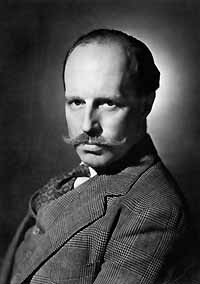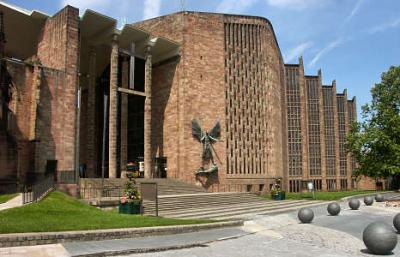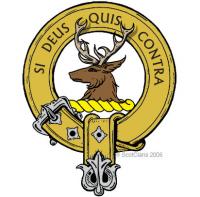
Clan Spens
Clan Spens People
Sir Basil Spence (13 August 1907 - 19 November 1976)

Sir Basil Spence was a prominent architect, known mostly for his post Second World War designs including Coventry Cathedral, and the extension to the New Zealand Parliament known as the Beehive.
Born in Bombay, India in 1907, Basil Spence was educated at John Connon school, which was ran by the Bombay Scottish Education Society, until the age of 11 when he was sent to Scotland and studied at George Watson's College in Edinburgh between 1919 and 1925.
In 1925 he attended the Edinburgh College of Art where he managed to secure a maintenance scholarship due to the "unusual brilliance" of his work. After he graduated in 1931 he worked on a number of deisgns, including hree pavilions for the 1938 Empire Exhibition in Glasgow, and country houses.
With the outbreak of the Second World War in 1939, Spence left the teaching post he held at Edinburgh College of Art, and joined the army, where he was commissioned as a 2nd Lieutenant in the Camouflage Training and Development Unit. In 1944 he took part in the D-Day landings, and at the end of the war he was demobilised having reached the rank of Major and having been mentioned in dispatches twice.
The post-war period was when Basil Spence produced some of his most notable work, including Coventry Cathedral, which was virtually completed destroyed during the Blitz of Coventry in 1940. A competition was held throughout the Commonwealth Nations in 1950 to find the best architect to undertake the project of redesigning the Cathedral. There were over 200 entrants, and in the end Spence's somewhat radical design was picked as the winner, with work beginning in 1956, and the Cathedral was completed in 1962. Spence receieved a knighthood for his work on Coventry Cathedral in 1960, two years before it was even completed.
Throughout the rest of the 1960s and '70s Basil Spence worked on numerous designs all over the UK and the Commonwealth. He died in 1976 at the age of 69 after an illness, with some of his final commissions not being built until after his death, including the new Glasgow Royal Infirmary, which was completed in 1981.
Coventry Anglican Cathedral







